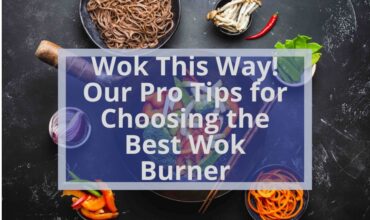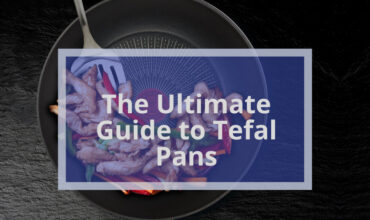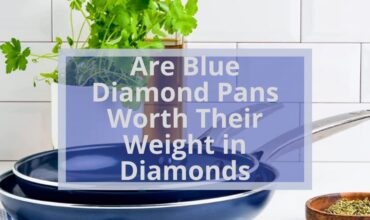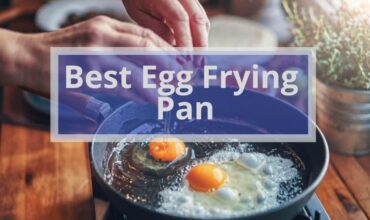Cooking tasty meals starts with having the right cookware. Ceramic and Teflon pans are popular choices.
Ceramic pans are made from natural clay and minerals. They heat evenly all over the pan. Food doesn’t stick much to the surface. Ceramic takes time to heat up but stays hot for longer. This helps sear and brown meat well.
Teflon pans have a slippery, non-stick coating. Food slides right off with little sticking. Teflon heats up fast and cools fast when you turn off the stove. The coating can scratch or peel after some years of use.
Both have advantages and disadvantages that determine which is suitable for you. Read on to discover the key differences between ceramic and Teflon, from durability to eco-friendliness. You’ll learn insider tips for choosing the best ceramic or Teflon pans for how YOU cook. Get ready to become a kitchen connoisseur and find the perfect cookware to make cooking fun, easy, and downright delicious!
Which Is Better For Daily Use?
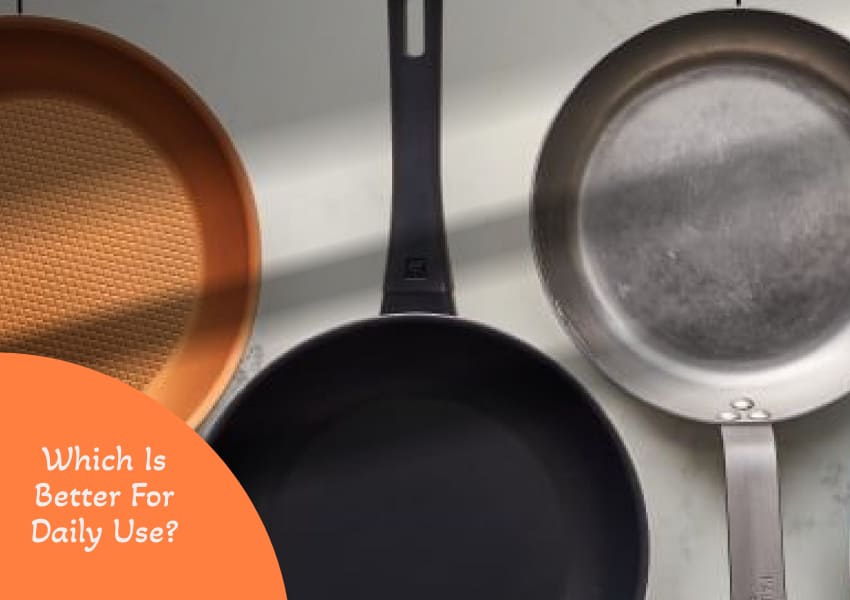
Ceramic and Teflon pans are used daily for cooking meals.
Ceramic pans work well for simmering sauces, frying meat, and sautéing veggies. The even heat helps food cook evenly without burning. The brown crust and char add lots of flavor.
Teflon is ideal for cooking eggs, pancakes, and fish. Food slides off the slick surface with no sticking.
When choosing cookware, consider what you cook most. Try both ceramic and Teflon pans to see which you prefer. With the right pan for the job, cooking is fun, and food turns out delicious!
What Are The Key Differences Between Ceramic And Teflon Cookware?
1. Durability
Ceramic and Teflon pans vary in durability.
Ceramic is very tough. It does not scratch easily. Ceramics can last for many years with care.
Teflon coating can scratch or peel off over time. Metal utensils, scouring pads, and dishwasher use can harm Teflon. Still, Teflon lasts several years for most people. Proper use keeps it intact longer.
For long-lasting cookware, ceramic is the winner. But Teflon gives good service, too, when handled with care.
2. Non-Stick Properties
Non-stick ability varies between ceramic and Teflon pans.
Ceramic cookware has some natural non-stick ability. But less than Teflon. Oil or butter is needed for good food release.
Teflon is engineered for total non-stick. Its slick coating lets food slide right off. Little or no fat is needed for cooking.
Over time, Teflon’s non-stick power fades as the coating wears. Ceramic’s non-stick skill stays the same. Proper preheating and fat help the ceramic’s release. For easy eggs, Teflon is best. Ceramic requires more oil for non-stick with meats and veggies.
3. Heat Resistance
Ceramic and Teflon pans vary in high heat abilities.
- Ceramics can withstand very high temperatures, up to 2,000°F. It’s great for searing, broiling, and oven baking.
- Teflon should not go over 500°F. High heat degrades the synthetic coating. Pans may release toxic fumes if overheated. Always check Teflon’s safe baking limits before oven use.
- Ceramic heats gradually but retains heat well.
- Ceramic’s thermal skill is ideal for good sears on steak or chops.
- For baking and broiling, ceramic is the winner. But be aware that sudden temperature shifts can crack it.
- Teflon quickly heats up but doesn’t hold heat long after the burner is off.
- Teflon’s sensitivity to high heat makes it unsuitable for high-temp cooking.
4. Heat Distribution
Heat spreads evenly in ceramic pans. The entire surface heats at the same rate, preventing hot spots that burn food. Ceramics, even top-to-bottom heat distribution, is perfect for uniform cooking. Meat or veggies brown evenly with no burning.
Teflon coatings heat up quickly but can lose heat unevenly. Low-quality Teflon may have cool spots, but high-quality Teflon diffuses heat more evenly.
Teflon’s heat flux can cause variations in doneness. Preheating Teflon pans helps improve the heat before cooking.
Understanding these heat flow differences allows one to choose the right pan. Even heating prevents under or overcooked meals.
5. Safety
Ceramic and Teflon pans have different safety factors.
Ceramic’s all-natural makeup has no health risks. No harmful chemicals leach from the clay.
Teflon’s synthetic non-stick coating can release toxic fumes if overheated past 500°F. This condition is called “polymer fume fever.” It may cause flu-like symptoms if inhaled.
Quality Teflon is safe at proper cooking temps. Follow the manufacturer’s instructions for safe use. Do not preheat it empty or leave it unattended. Reasonable cooking practices keep Teflon pans safe for meal prep.
With responsible use, ceramic and Teflon pans are safe options for everyday cooking.
6. Price Range
Ceramic and Teflon pans vary in cost.
Ceramic pots and pans are priced mid-range. Quality ceramic sets cost $100 to $300. Ceramic’s natural materials keep costs moderate.
Teflon pans are found at all price points. Cheap Teflon can be under $20 but won’t last. Better Teflon costs $40 to $120 for individual pans. Complete Teflon sets run $200 to $500. Teflon’s man-made tech makes low-cost production possible. But quality has a price.
With either type, higher cost means better performance and longevity. Consider your budget and needs when choosing. Affordable options exist for both ceramic and Teflon cookware.
7. Performance
Ceramic and Teflon pans perform well with different cooking jobs.
Ceramic excels at searing, browning, braising, and baking. Its even heating and heat retention cook meats and veggies perfectly.
Teflon shines for cooking eggs, pancakes, fish, and stir-fries. Food slides easily without sticking. Teflon’s fast heat-up allows quick cooking.
With care, both offer years of cooking service. Choose ceramic for outstanding simmering and baking. Pick Teflon for flawless eggs and sautees. Trying both helps discover which suits your cooking style best. The right pan performs the cooking tasks you want flawlessly.
Also read: Our Pro Tips for Choosing the Best Wok Burner
Is There A Difference Between Ceramic Pans And Ceramic Coating?
Ceramic pan labeling can be confusing. Not all “ceramic” cookware contains natural ceramic. Some brands mix ceramic with metal or coatings. Actual ceramic means the pans are entirely made from natural clay. Quality pure ceramic withstands up to 2,000°F temperatures. Other types labeled “ceramic” may only tolerate to 700°F.
When shopping, check material details. Genuine ceramic pans show no other components. Advanced ceramic coatings like Thermolon offer non-stick ability rivaling Teflon. These combine ceramic with other minerals. For durability and heat resistance, go for 100% ceramic construction. With so many options now, read labels closely before buying ceramic pans.
Types Of Ceramic And Teflon Cookware
Ceramic cookware can be made from various materials, such as clay, stoneware, and porcelain.
Teflon cookware can be made from aluminum, stainless steel, or cast iron.
Many styles of ceramic and Teflon pans are available.
Ceramic comes as frying pans, stock pots, dutch ovens, and bakeware. Ceramic pot styles include sauce pots and slow cookers. There are also ceramic-coated aluminum pans combining properties.
Teflon is sold as skillets, sauté pans, griddles, and more. Teflon is also used for woks, crepe pans, and grill pans.
With so many options, choose the suitable ceramic or Teflon cookware for your cooking needs.
Ceramic And Teflon Cookware Maintenance
Caring for ceramic and Teflon pans keeps them performing their best.
- Ceramic should be hand-washed gently.
- Avoid harsh scouring that can scratch.
- Dry thoroughly to prevent water spots.
- Re-oil after use for natural non-stick.
- Teflon can go in the dishwasher, but hand washing extends its life.
- Use non-abrasive cleaners and soft sponges.
- Avoid metal utensils that damage Teflon.
- Store both upside down to maintain pan surfaces.
- Replace Teflon once the coating wears off significantly.
Comp ceramic and Teflon pans provide many years of excellent cooking service with proper use and care.
Also read: The Ultimate Guide to Tefal Pans
Eco-Friendliness Of Ceramic And Teflon Cookware
Ceramic and Teflon pans differ in environmental impact.
Ceramics uses all-natural clay and minerals. Production has low emissions and energy use. Ceramic does not create pollution when disposed of. Thus, ceramic’s renewable materials and low waste make it the eco-winner.
Teflon relies on artificial chemicals like PTFE resin. Making Teflon releases greenhouse gases. Products containing PTFE must be specially handled when discarded. That is why some makers now use greener methods for non-stick.
With care, ceramic and Teflon pans both provide long service life. Choosing sustainable cookware is better for the planet.
Specific Brands And Models Of Ceramic And Teflon Cookware

Many top brands offer quality ceramic and Teflon pans.
Leading ceramic makers are Xtrema, GreenPan, and Carote.
Xtrema’s 100% ceramic pots and pans boast high heat tolerance. GreenPan’s Thermolon ceramic coating rivals Teflon’s non-stick ability.
Popular Teflon brands include Anolon, T-fal, and Calphalon.
T-fal’s Expert Pro pans combine Teflon with durable, rugged anodized aluminum. Anolon’s Teflon Nouvelle Copper cookware adds responsive copper cores.
With all the options, read reviews and compare features when choosing. Investing in highly-rated ceramic or Teflon pans from reputable companies ensures cooking success.
Customer Reviews Of Ceramic And Teflon Cookware
Reviews provide real user experiences of ceramic and Teflon pans.
For ceramic, customers praise even heating and easy cleaning. But some report pans being heavy or prone to chipping.
Teflon reviews highlight excellent non-stick properties. Drawbacks mentioned include coatings scratching or wearing off over time.
Reading multiple reviews identifies the best pans. The GreenPan Paris Pro gets raves for its slick ceramic surface. T-fal’s Signature pans win for budget-friendly non-stick performance.
Checking reviews before purchasing helps avoid disappointments. Quality ceramic and Teflon pans consistently earn high marks for cooking and durability.
Also read: Best Granite Stone Pan
How To Choose The Right Ceramic Or Teflon Cookware For Your Needs?
Picking the ideal pans means knowing your cooking style. Do you fry eggs daily or bake casseroles weekly?
Ceramic excels at braising meats and baking desserts. Its even heat gives perfect results. Teflon is unbeatable for versatile sautéing and frying. Eggs and fish cook without sticking. Consider your typical recipes and dishes. Read reviews to match high-rated pans to your purposes.
A Teflon omelet pan ensures perfect breakfasts. A ceramic roasting pan is excellent for Sunday dinners. Think about your budget, too. Quality ceramic and Teflon are affordable investments.
With the suitable pans, cooking is a joy, not a chore. Choose wisely for years of kitchen happiness!
Recycling Or Disposing Of Ceramic And Teflon Cookware
Are you retiring old pans?
Ceramic goes in regular trash or recycling. Its natural materials pose no hazard.
Special handling is needed for Teflon. The non-stick coating classifies it as hazardous waste in some areas:-
- Contact your local waste authority for guidance.
- Some facilities require special drop-off or collection.
- Avoid landfilling toxic Teflon.
- Donating usable pans is an earth-friendly option. Shelters often accept kitchenware donations.
- Consider repurposing – use old Teflon pans just for camping or painting.
With responsible disposal, we keep hazardous chemicals out of environmental circulation. Being mindful of end-of-life cookware protects the planet.
FAQs
Can ceramic or Teflon pans go in the microwave?
Ceramic pans are generally microwave-safe but always check manufacturer guidelines. Teflon pans should never go in the microwave – the coating may melt and release toxic fumes.
How do I get rid of stains in my ceramic pans?
For hard water or food stains, boil a 50/50 water and vinegar solution in the pan for 15 minutes. Try baking soda or lemon juice for tougher stains, and scrub gently with a soft sponge.
What type of utensils are best to use with ceramic and Teflon?
Use silicone, wood, or plastic utensils with both ceramic and Teflon to prevent scratching. Never use metal utensils on Teflon.
Can I use cooking spray on ceramic or Teflon pans?
Yes, cooking sprays are delicate with ceramic and Teflon cookware. Avoid overheating empty pans. Wipe out excess oil after cooking.
How do I eliminate food odors in my ceramic or Teflon pans?
For odor removal, boil water with lemon slices, vinegar, or baking soda in the pan for 10-15 minutes. Rinse well and air dry upside down.
Do ceramic or Teflon pans need to be seasoned?
Ceramic pans do not require seasoning like cast iron. However, lightly oiling the surface before each use can help improve their natural non-stick properties. Teflon has a non-stick coating, so it must not be seasoned.
How do I clean baked-on or burned food residue from ceramic or Teflon pans?
Let it soak in hot water to loosen the residue for ceramic, then use a non-abrasive sponge or soft brush. Avoid abrasive cleaners. For Teflon, soak in warm water, then use a non-scratch sponge. Burnt bits may require the gentle use of non-stick-safe scrubbing pads.
Can I put ceramic or Teflon pans in the oven?
Ceramic pans can often go up to very high oven temperatures, even broiling. Always check manufacturer instructions. Teflon should not go over 500°F as the coating may release toxic fumes.
Which type of pan is better for cooking meat – ceramic or Teflon?
Ceramic’s even heating and heat retention makes it great for searing and browning meats. The brown crust adds lots of flavor. Teflon works better for more delicate meats like fish.
Conclusion
Picking the suitable pots and pans for cooking joy takes some thought. Consider your needs – searing, frying, or baking. Read reviews and compare ceramic and Teflon features.
Quality ceramic excels at braising and roasting. Easy-care Teflon shines for eggs and stir-fries. With proper use and care, both types serve well for years. Invest wisely in the pans your recipes need.
Love cooking? Share your experiences with ceramic and Teflon! Post reviews of your favorite pans. Give tips on use and care. Recommend brands that work.
Your views help others equip their kitchens. Let’s get more people excited about cooking tasty, healthy meals at home. The first step is having dependable cookware you love. Together, we can make every meal an adventure!


